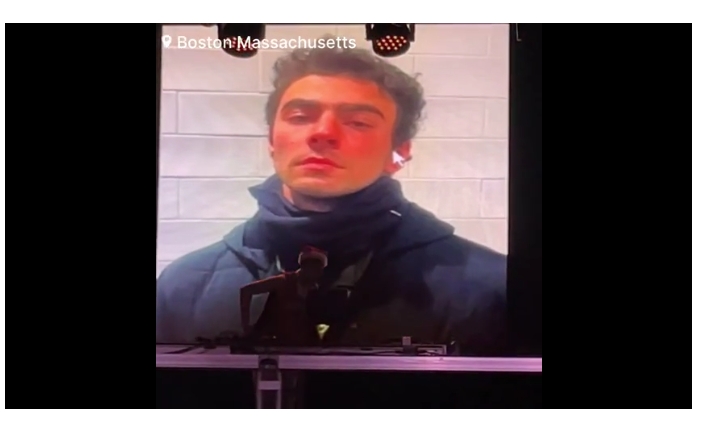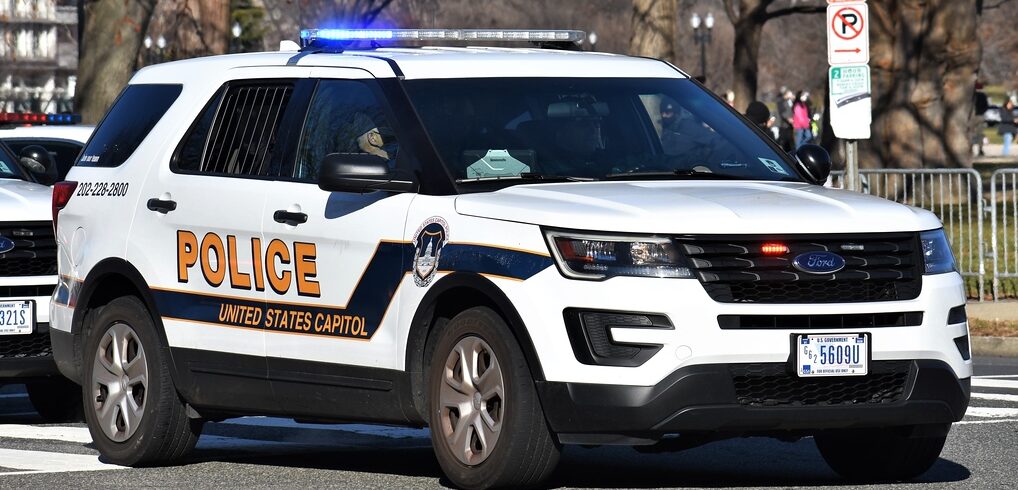
A shocking and controversial incident unfolded at the MGM Music Hall in Boston on Thursday night during the highly anticipated stop on the Bop to the Top Tour
A shocking and controversial incident unfolded at the MGM Music Hall in Boston on Thursday night during the highly anticipated stop on the Bop to the Top Tour. The concert, known for its nostalgic Disney anthems and pop hits, quickly turned from a celebration of music to a deeply unsettling moment when images of Luigi Mangione, the man accused of brutally murdering renowned healthcare CEO Brian Thompson, appeared on the event’s massive jumbo screen.
The crowd’s reaction to the photos was nothing short of appalling. As the images of Mangione were projected for all to see, the audience erupted into loud cheers, clapping, and celebratory gestures, seemingly unaware or unconcerned with the gravity of the man’s criminal charges. The disturbing response continued as some concertgoers reportedly rallied behind Mangione, loudly demanding “justice” for the accused murderer, a statement that many interpreted as a troubling show of support for a man charged with a horrific crime.
Brian Thompson, 49, was a respected leader in the healthcare sector, best known for his work in spearheading initiatives to improve access to medical services in underprivileged communities. His tragic death, at the hands of Mangione in a highly publicized incident on the streets of Manhattan, has sparked nationwide outrage and calls for justice. Thompson’s brutal murder, which occurred just a month ago, garnered widespread media attention, with tributes pouring in from healthcare professionals, friends, and family who mourned the loss of a visionary leader.
The incident at the Bop to the Top Tour concert, however, took an even darker turn, as the organizers and performers behind the event seemed to trivialize this tragedy. Footage from the concert captured audience members’ reactions as Mangione’s image appeared on the screen, and their behavior only intensified the public outcry. The celebratory gestures from concertgoers, in stark contrast to the crime for which Mangione is accused, left many stunned and deeply uncomfortable.
The response from the concert organizers has only added fuel to the fire of public outrage. In a statement following the incident, Bop to the Top organizers defended their actions by claiming, “We give the people what they want,” an explanation that has been widely criticized as dismissive and insensitive. Despite the mounting backlash, the event organizers have yet to issue a formal apology, and the images of Mangione remain posted across the official Bop to the Top social media platforms.
The reaction has sparked a fierce debate online, with many accusing both the concert organizers and the audience of trivializing the heinous crime and using it for spectacle. Critics are calling for accountability from the entertainment industry, questioning how sensitive issues such as murder and the grief of victims’ families are handled in the context of public performances. The decision to include Mangione’s photos at an event known for its lighthearted and family-friendly atmosphere has led to renewed discussions about how the entertainment industry navigates controversial topics, and the potential dangers of sensationalizing or appropriating real-world tragedies.
For many, the event at the MGM Music Hall represents a disturbing example of the way the entertainment industry has increasingly blurred the lines between genuine grief and spectacle. By turning a violent crime into a form of entertainment, the concert organizers have found themselves at the center of a public relations nightmare, with many accusing them of making light of an event that has left a family in mourning and an entire community reeling.
In an unexpected twist, the reaction to the images of Mangione’s face on the jumbo screen has sparked a movement online, with some supporters of Mangione voicing their belief that he is the victim of a miscarriage of justice. While these voices remain a minority, their calls for “justice” and their celebration of the accused murderer have added yet another layer of complexity to the already contentious story.
The decision to display the images of Mangione, who has been in custody since the days following the killing of Brian Thompson, has brought both criticism and further confusion regarding how the public perceives the case. Luigi Mangione, 38, has been charged with second-degree murder following the killing, a crime that took place in broad daylight on the streets of Manhattan. The details surrounding Thompson’s death are still under investigation, but law enforcement officials have said that the altercation began as a dispute between the two men before escalating into a violent confrontation.
Mangione’s motive for allegedly killing Thompson remains unclear, though investigators have stated that it was likely fueled by an ongoing personal issue. The murder occurred just outside of Thompson’s office building, where he was allegedly confronted by Mangione, who then assaulted him with a deadly weapon, leaving the CEO fatally injured. Thompson was later pronounced dead at a nearby hospital.
The immediate aftermath of Thompson’s death sent shockwaves throughout the healthcare sector, as colleagues and associates of the CEO mourned the loss of a man who had made significant strides in healthcare reform. Tributes poured in from all corners of the world, with healthcare organizations lauding Thompson’s legacy of compassion, leadership, and his tireless dedication to improving the lives of those in need. As the investigation into his death continued, many expressed disbelief that such a respected individual could have his life cut short so violently.
In the wake of this tragedy, Thompson’s family and close friends have spoken out, emphasizing their desire for privacy and respect as they process the loss. They have been vocal in their call for justice, urging authorities to fully investigate the circumstances surrounding his death and ensure that those responsible face appropriate consequences for their actions.
Meanwhile, the controversy surrounding the Bop to the Top concert has only continued to grow, with widespread condemnation across social media platforms. Many have demanded that both the organizers and the venue take responsibility for what was perceived as a gross misstep. Critics argue that by featuring Mangione’s image and allowing the audience to cheer and support him, the event organizers were indirectly endorsing a violent crime, which many view as an irresponsible and dangerous act.
Prominent figures in both the entertainment industry and the criminal justice sector have also weighed in on the incident. Public figures, including activists and social commentators, have expressed their concern about how the actions of concertgoers and organizers could reflect society’s broader relationship with crime and tragedy. Several have pointed to the need for a cultural shift that would foster more sensitivity around how crimes such as murder are portrayed in the media and entertainment.
As the incident continues to unfold, public outrage shows no signs of dissipating. Many have called for legal action against the event organizers and MGM Music Hall for their role in what is being called a “disrespectful and callous display.”
The public’s response to the incident has underscored a broader issue facing the entertainment industry today: the fine line between entertainment and the responsibility of the industry to handle sensitive and tragic real-world issues. While concert promoters and entertainers have long been in the business of providing escapism and entertainment, this incident serves as a stark reminder of the potential harm that can arise when real-life tragedies are trivialized for the sake of spectacle.
As this story continues to unfold, the Bop to the Top organizers face increasing pressure to address the controversy head-on. Many are demanding an official apology, while others are calling for a broader discussion about the ethics of entertainment and the boundaries between fiction and reality in the world of pop culture.
The fallout from this disturbing incident is likely to reverberate far beyond the concert hall, sparking a wider conversation about the entertainment industry’s role in shaping public perception of crime and justice. In the meantime, Brian Thompson’s family and friends continue to mourn his tragic death, while Luigi Mangione’s future remains uncertain as he faces serious legal charges in the wake of the murder.
This case serves as a stark reminder that entertainment, while meant to bring joy, can also have unintended consequences when it crosses ethical lines. The death of Brian Thompson and the controversy surrounding his accused killer’s image being shown at a concert will continue to raise questions about the entertainment industry’s responsibility to uphold values of respect, dignity, and sensitivity in the portrayal of real-world issues.



